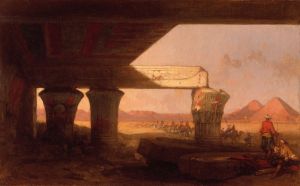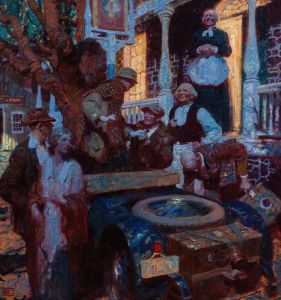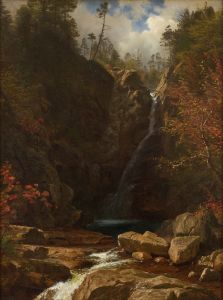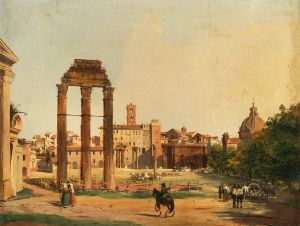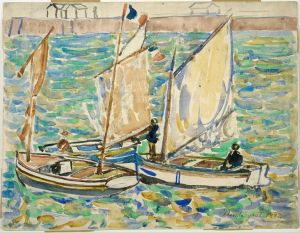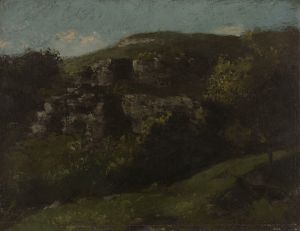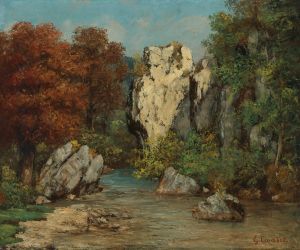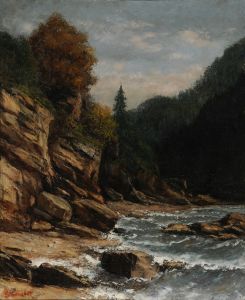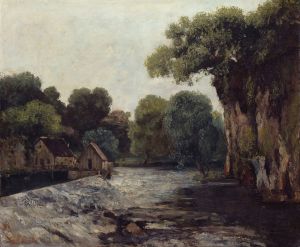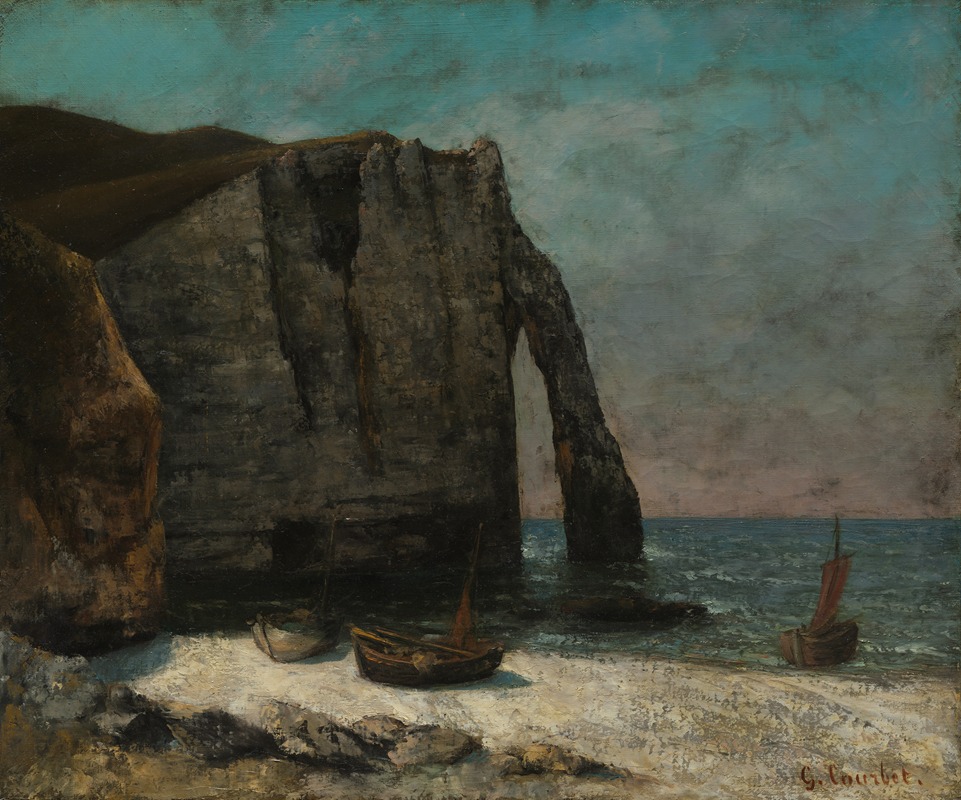
The Cliff at Étretat
A hand-painted replica of Gustave Courbet’s masterpiece The Cliff at Étretat, meticulously crafted by professional artists to capture the true essence of the original. Each piece is created with museum-quality canvas and rare mineral pigments, carefully painted by experienced artists with delicate brushstrokes and rich, layered colors to perfectly recreate the texture of the original artwork. Unlike machine-printed reproductions, this hand-painted version brings the painting to life, infused with the artist’s emotions and skill in every stroke. Whether for personal collection or home decoration, it instantly elevates the artistic atmosphere of any space.
"The Cliff at Étretat" is a notable painting by the French artist Gustave Courbet, created in 1869. Courbet was a leading figure in the Realist movement, which emerged in France in the mid-19th century. This movement aimed to depict subjects as they were, without idealization, focusing on everyday life and the natural world. Courbet's work often challenged the conventions of the time, emphasizing a truthful representation of the world around him.
The painting captures the dramatic cliffs of Étretat, a small coastal town in the Normandy region of France. Étretat is renowned for its striking natural rock formations, including arches and cliffs, which have been a source of inspiration for many artists. Courbet was particularly drawn to the rugged beauty of this landscape, and he visited the area several times to paint.
In "The Cliff at Étretat," Courbet employs his characteristic style, marked by a robust use of color and texture. The painting showcases the imposing cliffs rising sharply from the sea, rendered with a sense of solidity and mass. Courbet's technique involves thick, expressive brushstrokes that convey the rough texture of the rock surfaces and the dynamic movement of the waves crashing against the cliffs. The composition is balanced, with the cliffs occupying a significant portion of the canvas, while the sky and sea provide a contrasting backdrop.
Courbet's choice of subject matter reflects his interest in nature's raw and untamed aspects. Unlike the idealized landscapes of earlier Romantic painters, Courbet's depiction of Étretat is grounded in reality, capturing the scene's inherent power and majesty. The painting is devoid of human figures, emphasizing the solitude and grandeur of the natural environment.
"The Cliff at Étretat" is part of a series of works Courbet created during his visits to the Normandy coast. These paintings are celebrated for their vivid portrayal of the region's unique geological features and their contribution to the development of landscape painting in the 19th century. Courbet's approach influenced subsequent generations of artists, including the Impressionists, who also sought to capture the fleeting effects of light and atmosphere in their work.
Today, "The Cliff at Étretat" is held in high regard as an exemplary piece of Courbet's oeuvre. It is housed in various collections and has been exhibited in numerous museums worldwide, allowing audiences to appreciate Courbet's mastery of landscape painting and his commitment to realism. The painting continues to be studied for its technical prowess and its role in the broader context of art history, particularly in the transition from Romanticism to Realism.
Courbet's work remains influential, and "The Cliff at Étretat" stands as a testament to his ability to convey the sublime beauty of the natural world through his art. The painting not only captures a specific location but also embodies the artist's philosophy of depicting the world truthfully and without embellishment.





